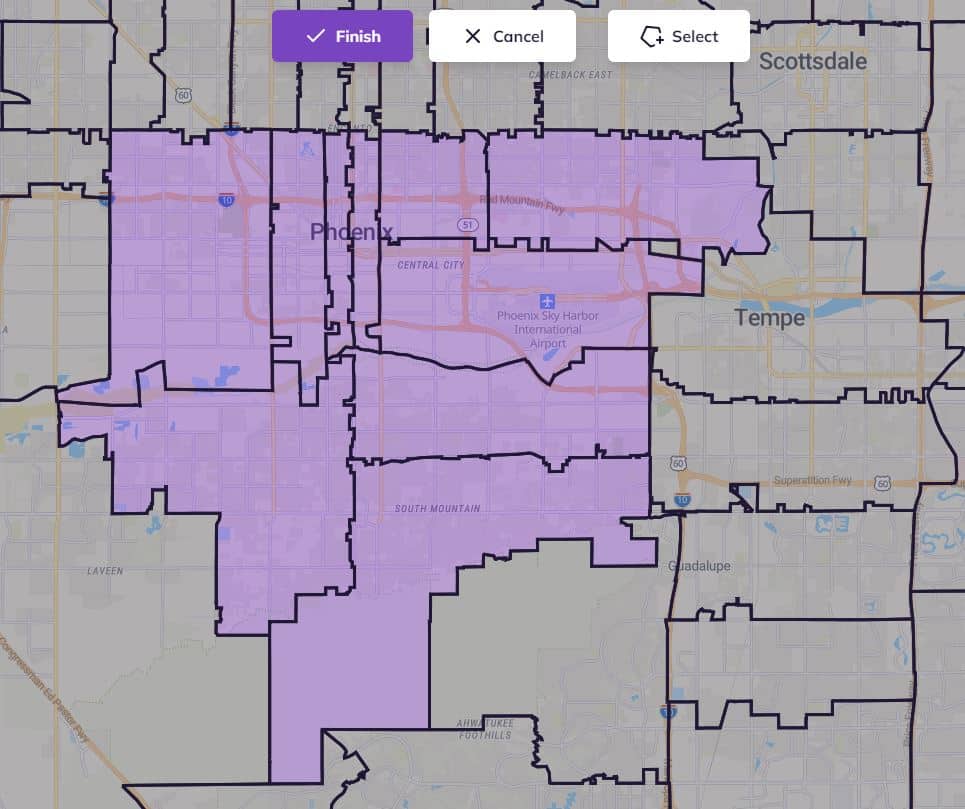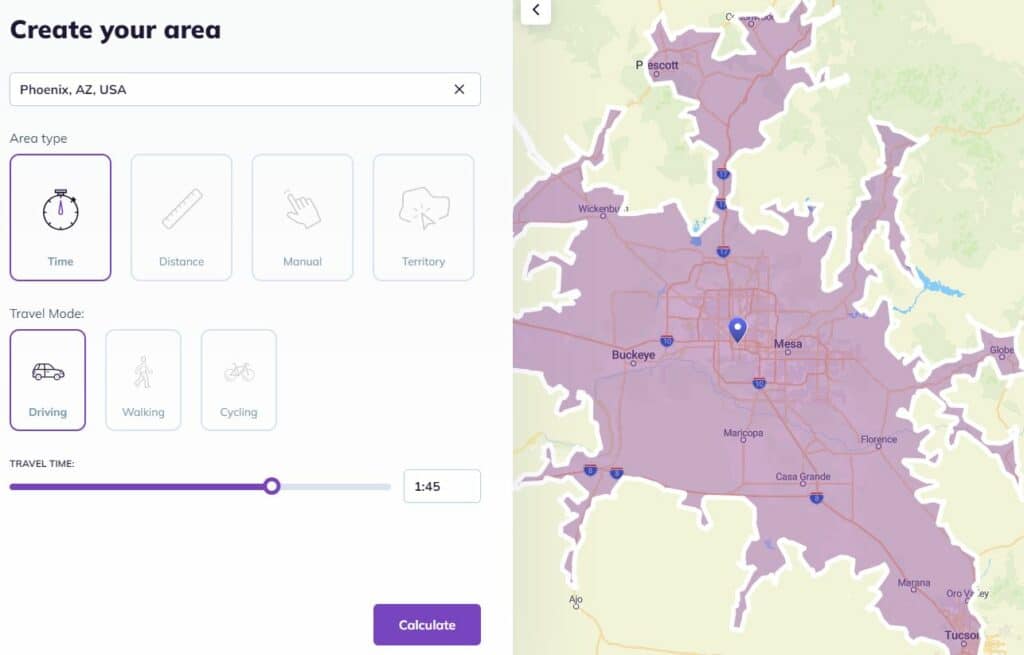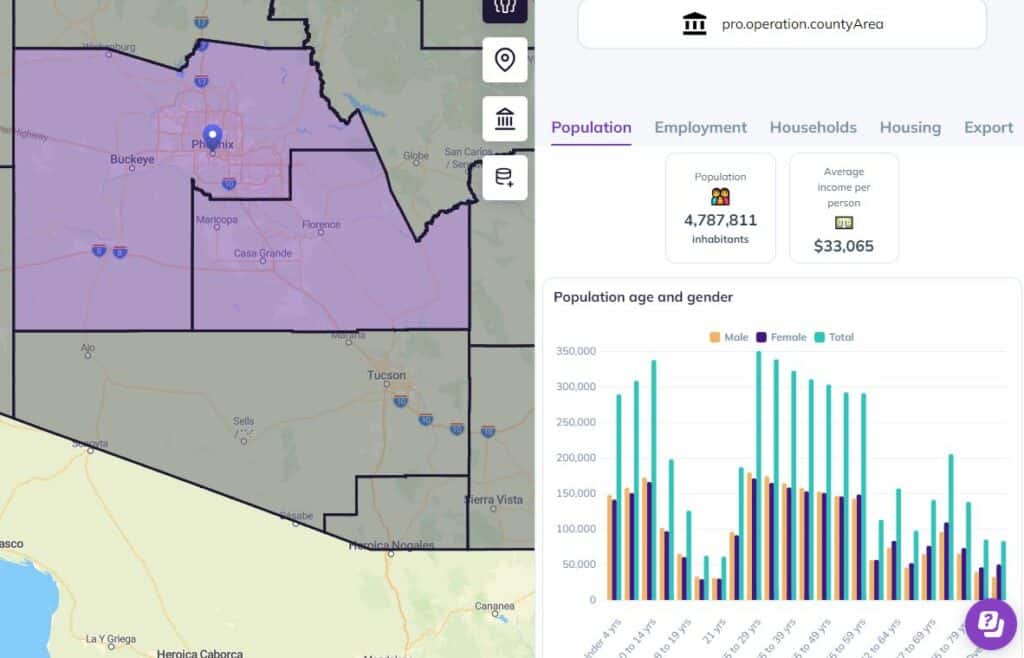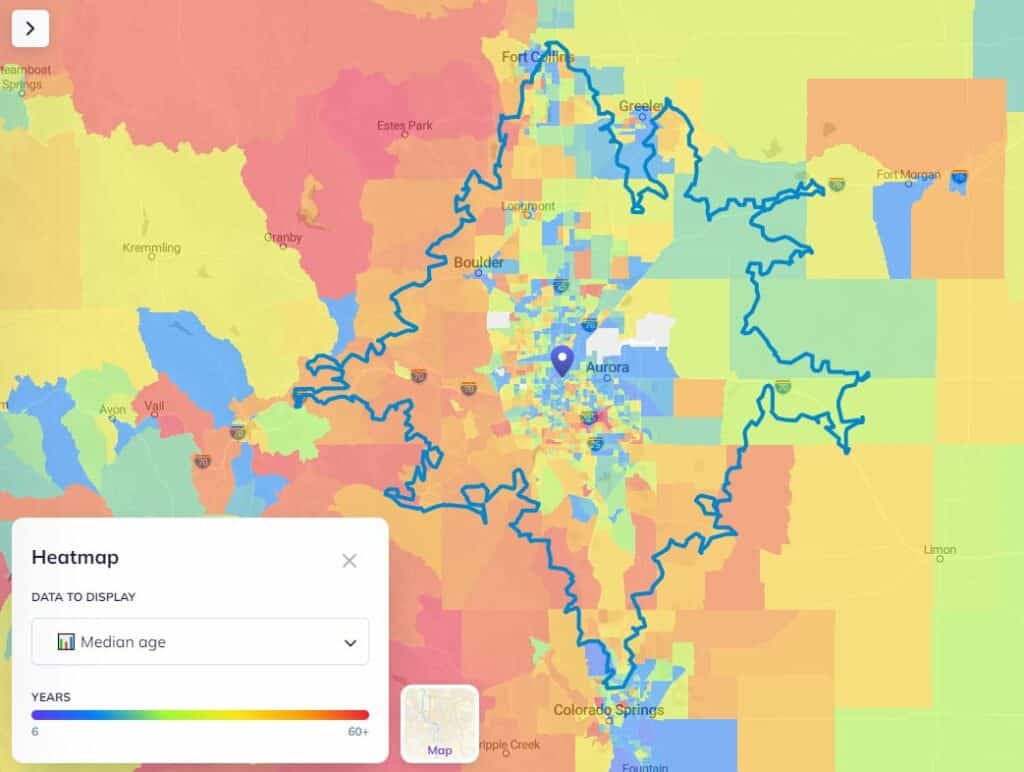How you define franchise territories can make or break your franchise. Create territories that are too advantageous for the franchisee and your business won’t grow as much as it can. But fail to make them attractive and you won’t get any franchisees at all.
Let’s dive into some of the things you absolutely must communicate with potential franchisees when offering a franchise and how you can define (and analyze!) territories to make them as attractive as possible.
4 reasons why you should properly define franchise territories
When you’re working on starting or growing a franchise, properly mapping out franchise territories might seem like a low priority, especially compared to acquiring new franchisees! But taking this important step before you focus your efforts on growing your franchise can huge boon to your growth. Here’s why:
- It can eliminate “dead zones”: If you dole out franchise territories based solely on municipalities without any additional research, you might end up with huge swathes of customers that go unserved.
- It helps prevent cannibalization: Properly mapping franchise territories ensures that two franchisees aren’t competing for the same customers, which is better for the overall franchise.
- It’s essential for optimal logistics: If you’re supporting your franchisees with logistics, you’ll want to make sure you know exactly where they need the most help. Mapping out your territories helps with this.
- It empowers your marketers: Location-based marketing efforts, which target customers based on where they live, are a lot more powerful with data from properly-defined franchise territories.
3 things you must disclose about franchise territories
Before you map and analyze your franchise territories, there are a few things you need to establish. These are legal implications that must be communicated in a franchise agreement. This will help potential franchisees make an informed decision before purchasing a franchise.
Fixed location versus mobile
It might seem obvious to you since you’re running the franchise, but your franchisee needs to know if they’ll be operating a fixed store or if they’ll be providing services throughout their territory. Not only will this give them a better idea of the kind of operating costs they can expect, but it’ll have an impact on other aspects of your franchise agreement, like if they can expect protection.
Territory protection
No, we’re not talking about keeping their store safe from mobsters! For franchising, territory protection simply refers to whether or not a franchisor will protect a franchisee’s territory from having another franchisee open up shop nearby.
For example, this 2008 franchise agreement from McDonald’s, archived with the SEC, has a clause that grants exclusivity to a franchisee, stating: “McDonald’s shall not […] grant the right or license to grant franchises to any other Person to operate any McDonald’s Restaurant in such Territory.”
There are some advantages to adding territory protection to a franchise agreement — namely that it makes it more attractive for a potential franchisee — but it can also limit your franchise’s growth, especially if you’re operating in a smaller market.
Territory protection exceptions
If you do decide to add territory protections to your franchise agreement, you’ll need to disclose any exceptions to that protection. These exceptions are incredibly useful for striking a balance between offering a balance between an attractive franchise opportunity and creating more potential for growth. Some examples of these exceptions include:
- Captive markets: These are venues that attract large audiences and in which franchisees shouldn’t expect protections. For example, with such an exception, you could offer an exclusive territory to a franchisee in Brooklyn but also offer a location in the Kings Plaza Shopping Center to another franchisee without breaking a territory protection clause.
- Web and other distribution models: For fixed-location businesses, you could create an exception that only guarantees exclusivity for customers vising brick-and-mortar locations. If selling online is particularly profitable, you’d then still be able to sell directly to consumers in a franchisee’s otherwise exclusive territory. This could mean, for example, giving an exclusive territory for a restaurant to a franchisee, with the exception of food delivered through apps like Uber Eats.
- Private label: This exclusion would mean that, as a franchisor, you could take any of the products you offer and sell them through other retailers, even within a franchisee’s exclusive territory. Many fast-food brands have private-label products — like sauces — that they’ll sell through a private-label deal.
4 ways to define franchise territories
Accurately communicating the rights and restrictions a franchisee can expect from the territory they’re buying is one thing, but you also need to properly define this territory — especially its boundaries with others.
>> 3 key steps when you should define your franchise territories
Here are a few methods for doing this, as well as the biggest advantage and disadvantage of each one.
Counties and ZIP codes

Advantage
From a legal perspective, this may be one of the simplest ways to map out franchise territories, and that’s this method’s greatest advantage. ZIP codes stay relatively fixed and are incredibly easy to communicate; you just have to list them in your contract. Of course, researching and mapping them out can be a bit tougher without the right tool. But with a platform like Smappen, you can do it in minutes.
Disadvantage
This method isn’t great for making a franchise territory look attractive. Sure, a ZIP code can represent a large area visually, but it won’t tell a franchisee how big their market will be, how many customers they expect to bring in, or what kind of competition they’ll be facing.
So this isn’t necessarily the best way to define trade areas; at least not when used on its own
Isochrone territories

Advantage
An isochrone territory map — or travel time map — represents the coverage a business will get based on the amount of time a customer will take to reach that location. They cover every transportation method you can think of, from driving to public transit, usually with a map for each one. These maps are one of the most accurate ways to represent a franchisee’s actual reach since they account for real-world conditions.
Disadvantage
While this method is one of the most realistic ways to draw up a franchise territory, it’s not necessarily best suited to drafting a franchise agreement. You can’t really define a territory as “an area covering a 15-minute drive in every direction from 872 Pine Hill Road.” Franchisees will expect something a bit more concrete.
Success criteria territories
In order to have the perfect franchise territories, you should know what criteria are a key to your brand’s success.

Advantage
For some franchises, a more custom approach to defining territories is needed. They’ll base their territories on local markets, defining their ideal customers — like high-income households or young women between 18-24 — and grouping them together into individual territories, roughly based on location. With this method, a franchise territory wouldn’t just be “South Los Angeles,” but “65,000 women between 18-24 in South LA.” It would also have some kind of label, like “territory 89712.” This method is one of the most precise, but it can be difficult to map out — usually involving an external contractor to get just right.
Disadvantage
On its own, this method isn’t necessarily appropriate for all franchises, and there are some industries where it won’t work at all. Here’s why. Say you’ve defined your local market as “50,000 men between 45-65 in northern Nebraska.” In some regions, that’ll give you a market that might be 50 miles wide, which in certain industries is about how far a customer is willing to travel to get whatever you’re offering. But in other regions, you’ll get a market that’s hundreds of miles wide, and few of the customers in this zone will actually make the trip to reach your franchise. That’s why you usually don’t want to use this method on its own. Instead, you’ll want to combine it with a method that takes the reality of the terrain into account.
Combining all three

Since every method has its own advantages, you should try combining all three.
First, you can use customer data to identify the criteria for a franchisee’s addressable market. If you know that most of your customers come from a certain income bracket, for instance, you could use Smappen to access U.S. census data that gives you an estimate of how many of these ideal customers live within certain neighborhoods with the heatmap feature.
Then, you can draw an isochrone map to show how many of these customers a franchisee can hope to capture.
And finally, you can either get a list of ZIP codes found within that map — which Smappen does for you automatically — or edit the area from isochrone to ZIP code boundaries, and add them to a franchise agreement.
>> How to edit your area from isochrone to administrative boundaries
How to map and analyze territories with Smappen
One of the single best ways to both map and analyze your franchise territory is with location intelligence data. That’s why you need Smappen.
Smappen is a location intelligence tool you can use to draw franchise territories, analyze local markets, and even optimize logistics and marketing efforts.

Here are some ways you can use Smappen to analyze your franchise territories to create a more enticing offer for a potential franchisee:
- Use point of interest data to research the competition.
- Get access to U.S census data to establish demographics.
- Import your own customer data to get a sense of how a territory will perform.
- And more!
Smappen is easy to use, stuffed full of useful data, and you can start using it for free.
Build a winning franchise
When mapping out potential franchise territories, you need to clearly describe what a potential franchisee can expect — in legal terms — but you also need to make these territories attractive. That means offering them a great opportunity without hampering your franchise’s overall growth. And when it comes time to mapping them out and analyzing them, you can do that with Smappen.

